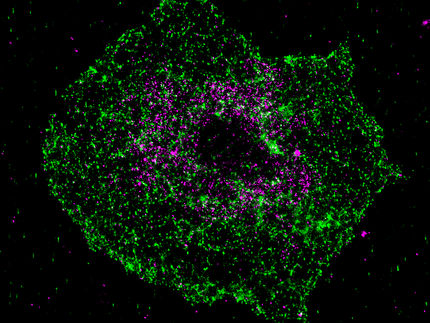New understanding of COX-1 and COX-2 enzymes could lead to revised classification of pain meds, Queen's study shows
Advertisement
COX-1 and COX-2 enzymes may be blocked by pain medications such as Advil and Vioxx in a more complex manner than was previously understood, a Queen's University study has found.
"The results of the study have potential implications for how we classify the commonly used anti-inflammatory and pain drugs for aches, pains, and fever," says Colin Funk, a professor of Biochemistry and Physiology at Queen's and Canada Research Chair in Molecular, Cellular and Physiologiocal Medicine.
The study was initiated to explore the biochemistry associated with COX-2 inhibitors such as Vioxx, Bextra and Celebrex, which are now associated with an increased incidence of heart attack and stroke. Researchers looked at mice that were genetically modified so that their COX-2 was inhibited - to create a physiology in mice that roughly mimics that of users of COX-2 inhibitors. They found that the COX-1 enzymes in the mice "hooked up" in an unanticipated way with their remaining COX-2 enzymes creating what is called a new heterodimer. Dr. Funk's co-researcher, Queen's biochemist Robert Campbell, has developed a computer model to show how the COX-1/COX-2 molecules can associate. "It's possible the COX-2 inhibitor medications may affect the resulting new enzyme which is a mix of COX-1 and COX-2," says Dr. Funk.
This effect is being further explored by scientists and may lead to a broadened understanding of the biochemistry of common pain medications. It is now pointing toward possible alternatives to drugs like Vioxx and Celebrex, says Dr. Funk.
Most read news
Topics
Organizations
Other news from the department science

Get the life science industry in your inbox
By submitting this form you agree that LUMITOS AG will send you the newsletter(s) selected above by email. Your data will not be passed on to third parties. Your data will be stored and processed in accordance with our data protection regulations. LUMITOS may contact you by email for the purpose of advertising or market and opinion surveys. You can revoke your consent at any time without giving reasons to LUMITOS AG, Ernst-Augustin-Str. 2, 12489 Berlin, Germany or by e-mail at revoke@lumitos.com with effect for the future. In addition, each email contains a link to unsubscribe from the corresponding newsletter.




















































